

How Americans feel about the government shutdown
Government shutdowns aren’t as common as they once were. Former President Jimmy Carter presided over five government shutdowns between 1977 and 1979. Former President Ronald Reagan presided over eight in his two terms in office. In the time since, spanning six different presidents, there had been a total of six. Now, that number is seven.
That said, President Donald Trump is no stranger to government shutdowns. Trump’s first term featured two government funding shutdowns, one at the start of 2018 and a second at the end of 2018. This shutdown will be the third occurring under a Donald Trump presidency.
Where do Americans stand on this government shutdown, and how does it compare to previous shutdowns?
Below are five charts on how Americans feel about the government shutdown.
- High, but not overwhelming, concern. A majority of Americans are at least somewhat concerned about the government shutdown, though it’s not very concerning to most. Fewer, but still a plurality, say they are worried that the shutdown might delay services they rely on.
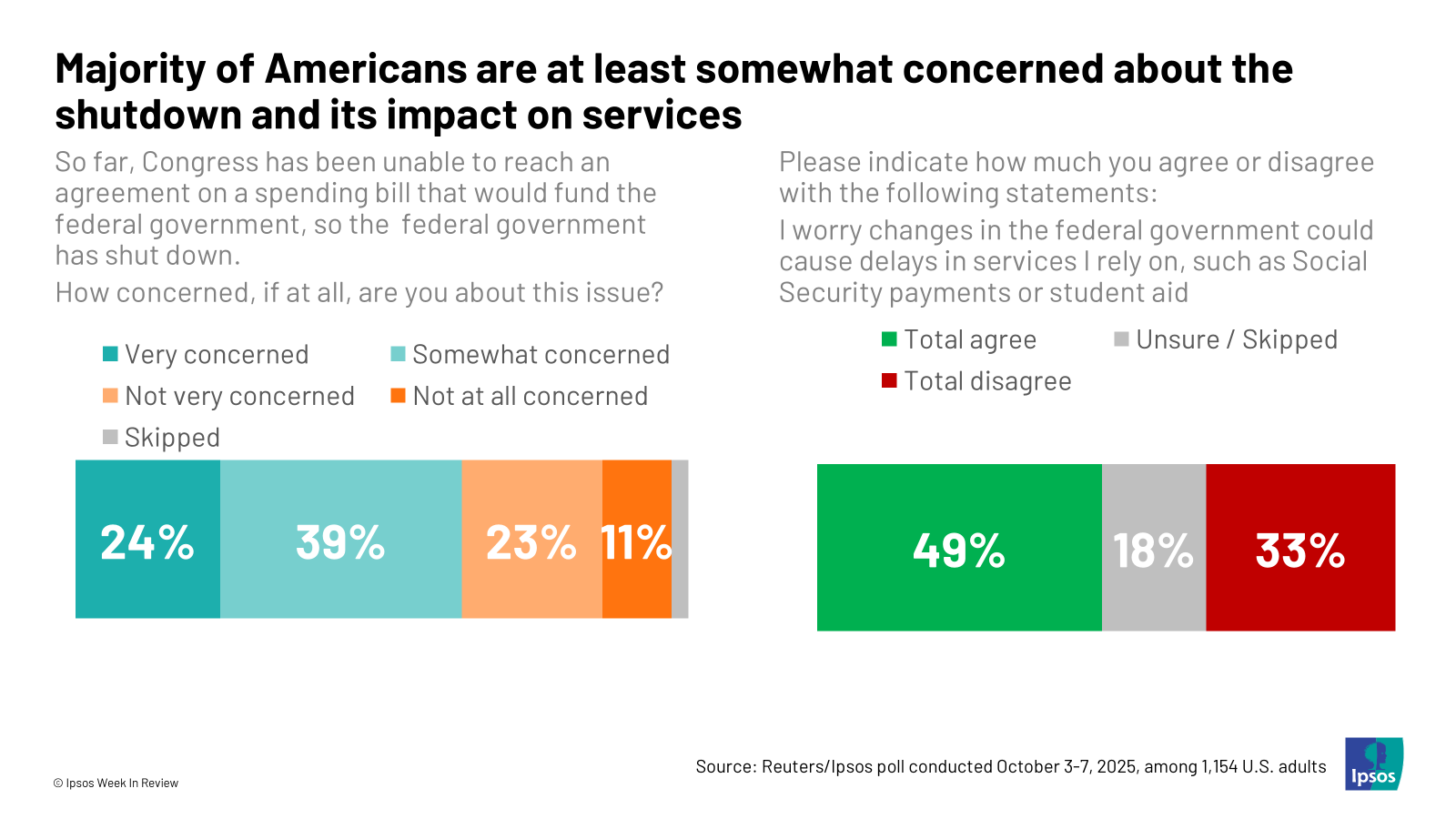
- Who’s getting blamed? Everyone. No side will leave this shutdown unscathed. Democrats in Congress, Republicans in Congress, and President Trump receive at least some blame in the eyes of the public.
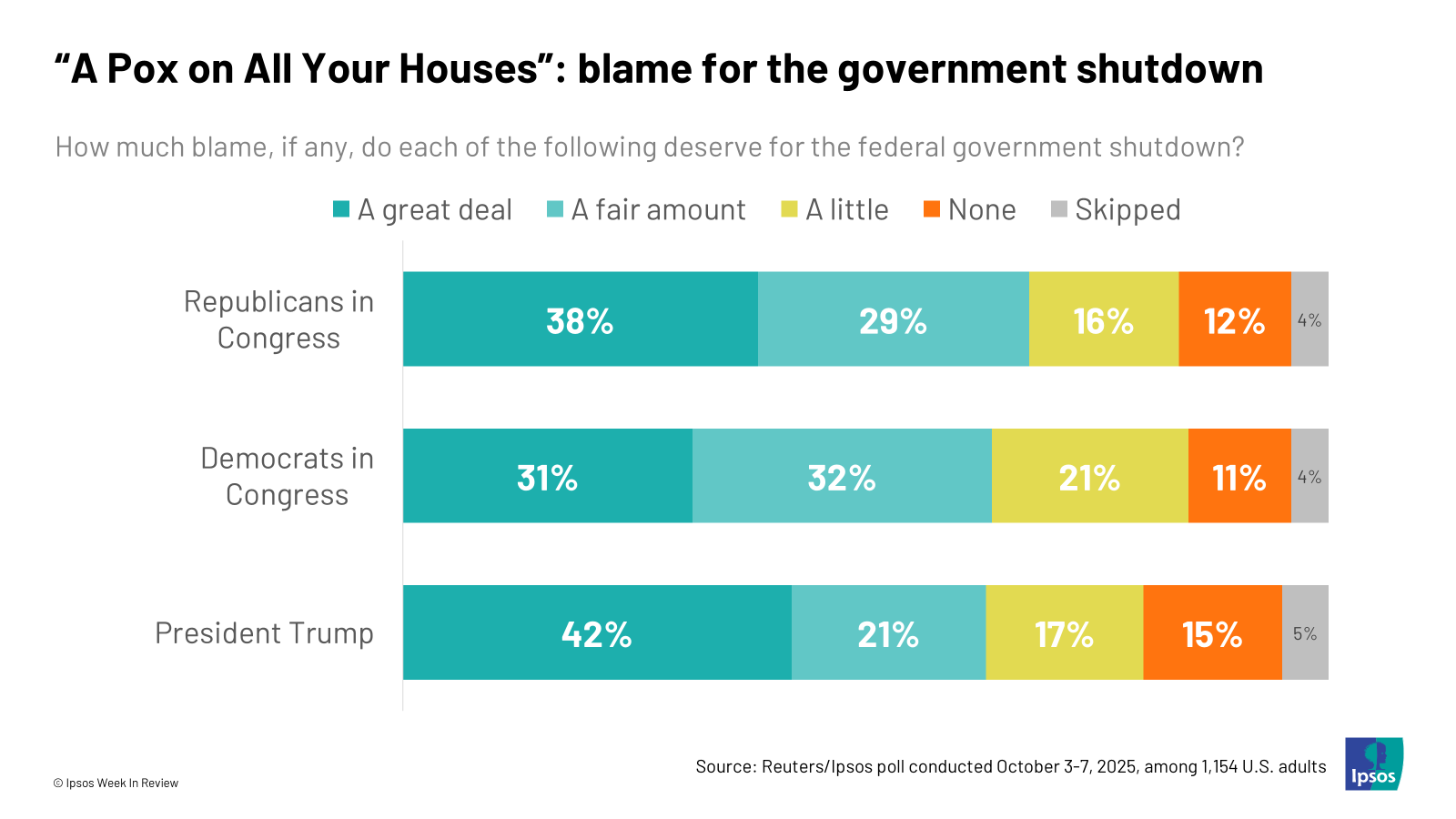
- Who’s most to blame? Again, blame is distributed among everybody, just not entirely equally. It’s not too surprising that Democrats blame Republicans, and Republicans blame Democrats. What’s notable is that independents are more likely to blame either Republicans in Congress or Trump over Democrats in Congress.
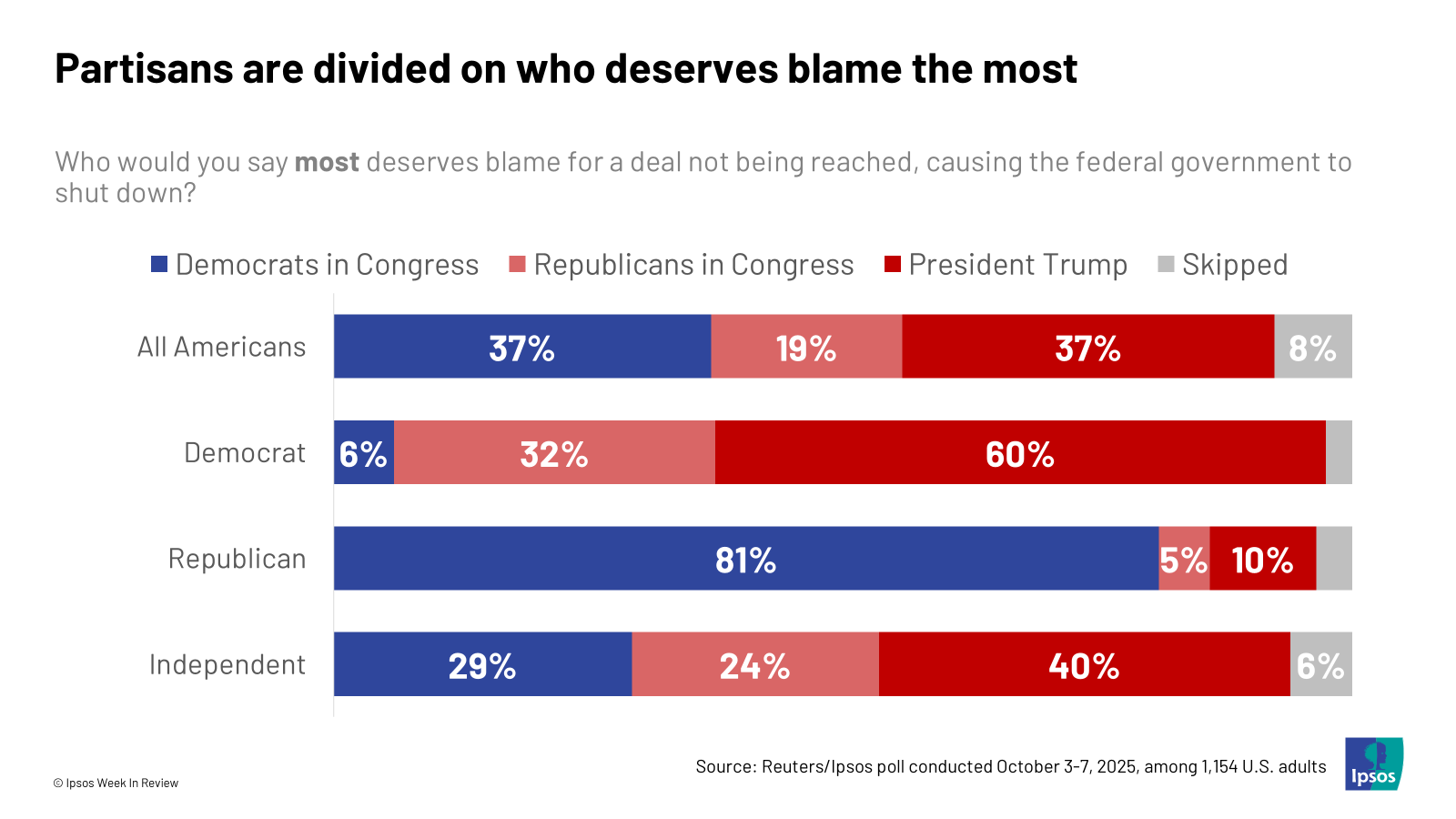
- Not Trump’s fault? Amid the last government shutdown, which lasted a record 35 days, a plurality of Americans blamed President Trump for a deal not being reached. This go around, Americans are less likely to blame President Trump but are more likely to blame Republicans. It’s also worth noting that in the second week of the December 2018 shutdown, the proportion blaming Trump for a lack of a deal rose four percentage points. Would something similar happen if this shutdown reaches two weeks? Watch this space.
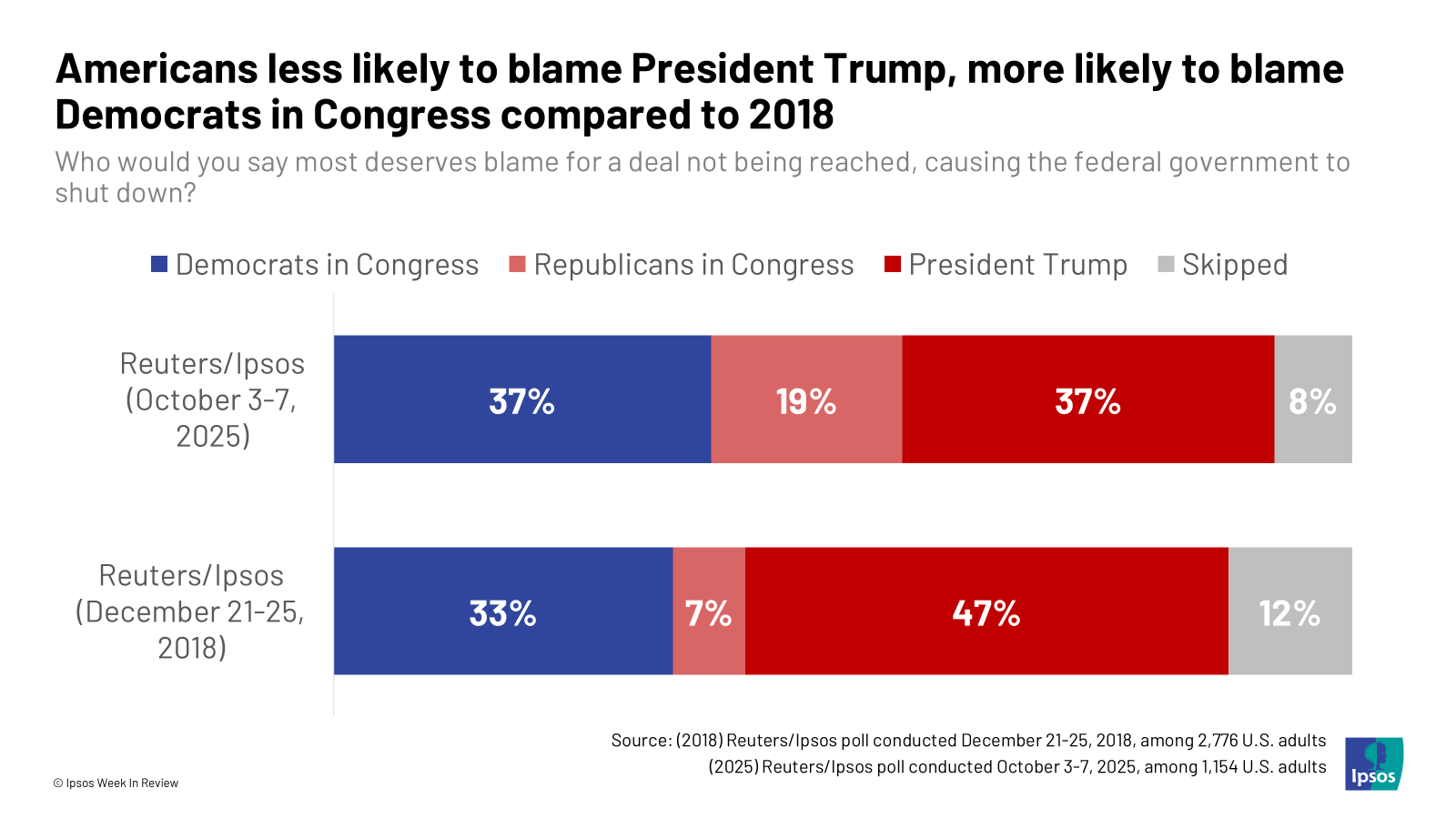
- How hard do Americans want their side to fight? It depends. Half of America would prefer their leaders stand up for their issue positions at the cost of a shutdown. Independents would rather see a compromise. The most likely end result: more disillusionment.
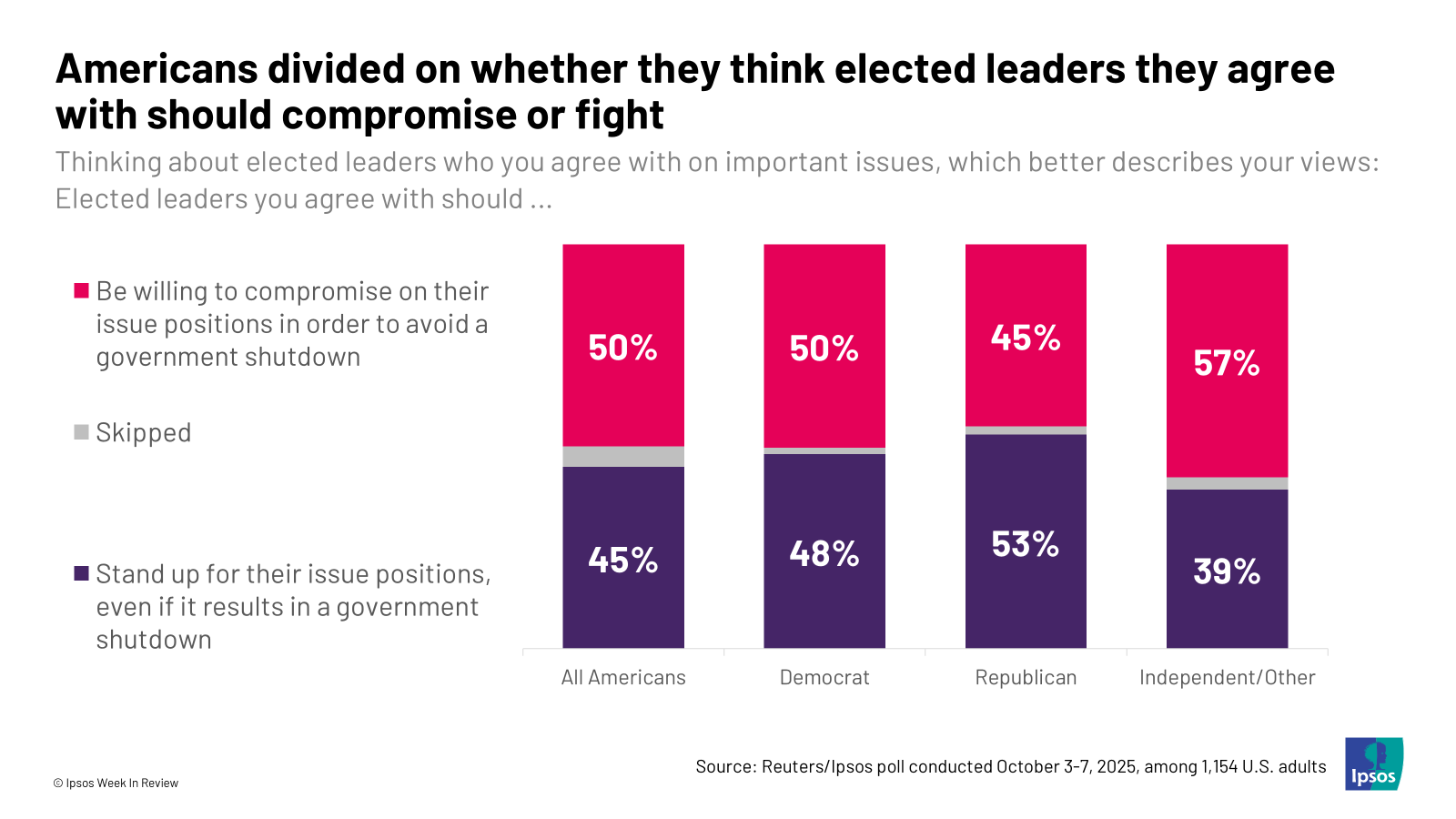
As of this article’s writing, the current government shutdown is set to pass the ten-day mark with no clear end in sight. The history of the first two shutdowns occurring in Trump’s first term don’t give any clue as to how long this shutdown will last – one lasted two days, the other lasted an all-time record of 34 days.
Polling suggests that this shutdown might hurt Republicans and Trump more than it would hurt Democrats. At the same time, there aren’t any glaring signs that it will help Democrats, who have been struggling with their own lack of popularity. Ultimately, while the fate of this shutdown is uncertain, one thing that seems likely is that this shutdown will only reinforce partisan entrenchment and disillusionment.



